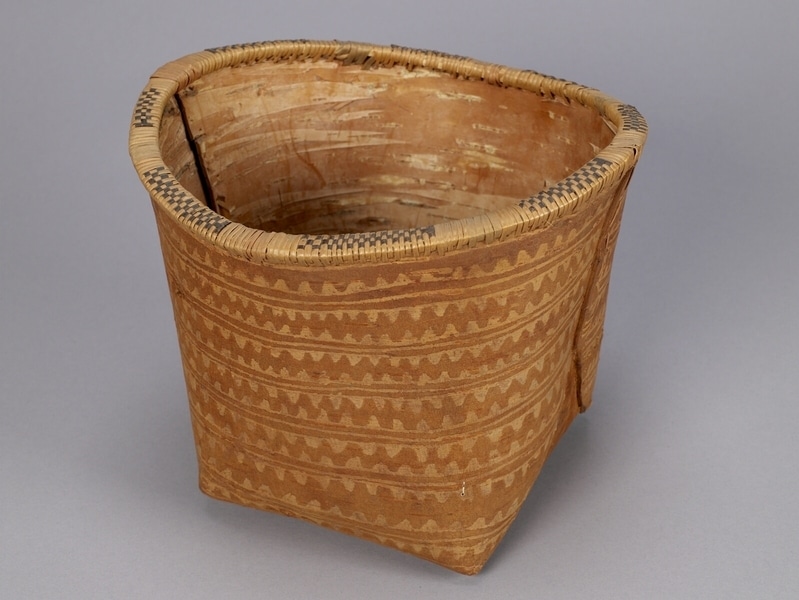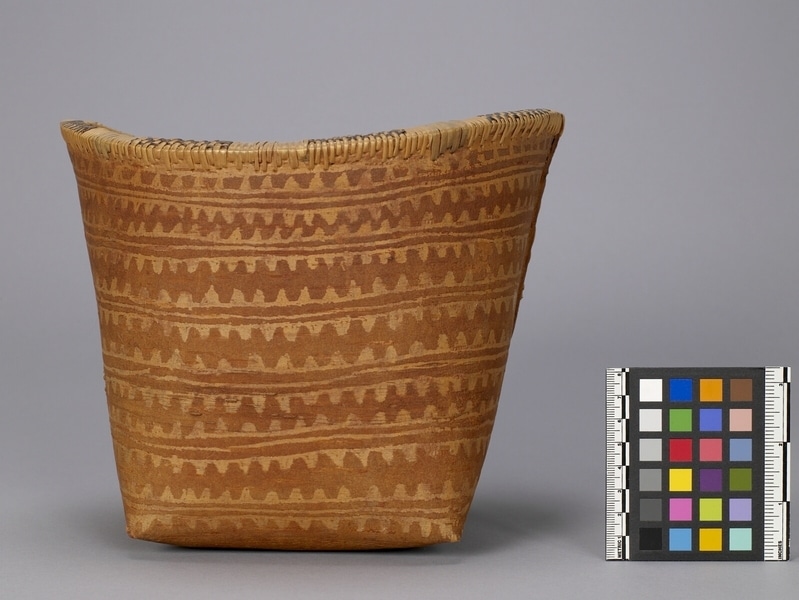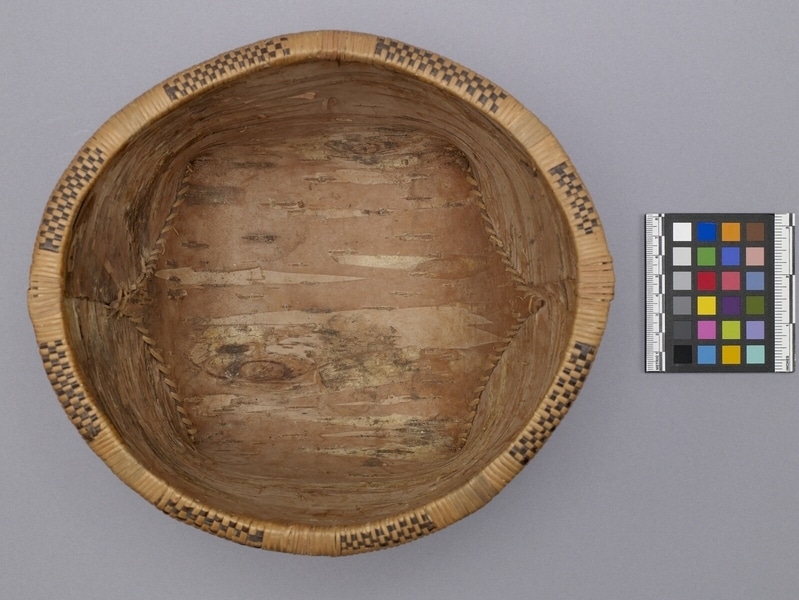Basket Item Number: Na1162 from the MOA: University of British Columbia



Description
Oval birch-bark basket or container with sides tapering to a square base. One piece of bark is folded and stitched at two ends with spruce root. The reinforced wood rim is lashed to body of basket with spruce root. Rim is decorated with red dyed spruce root wrapped six to eight times at centre of each side and green dyed spruce root at each of the four approximate corners. In between the dyed areas dark brown dyed spruce root which is interwoven with lashing creating a checkered effect. The walls of the basket are decorated by a horizontal scraped design, the design consists of six bands. Each band has a centre line bordered by two notched lines with the notches pointing away from each other. There are two pencil marks on the upper interior side wall.
History Of Use
Basketry filled a vital need as containers for domestic storage and transportation of goods. Some had multiple uses; others were made for specific functions. After European contact, used for trade and sale items. Forms have been altered to meet European tastes. Basketry making was and is a women's art.
Cultural Context
domestic storage; cooking; transport
Specific Techniques
When harvesting, all makers have to first peel a large sheet of the waterproof outer bark from a suitable Western White Birch tree; the inner bark remains intact, allowing the tree to survive. After birch bark cut to size, it is steamed, folded and sewn at corners. Wood rim is lashed with spruce root, outside scraped to decorate.
Narrative
This decorated basket is part of a collection of interior and coastal basketry that belonged to a Gitxsan woman, Agnes Macintosh Brentzen (1873 - 1966), who lived in the coastal Ts’msyen community of Lax Kw’alaams. It is not known whether she or a relative may have made this piece or acquired it through trade, gift, or purchase, as birch-bark baskets historically were widely traded and later also made for sale.
Item History
- Made in British Columbia, Canada between 1900 and 1920
- Collected in Port Simpson, British Columbia, Canada and Lax Kw'alaams, British Columbia, Canada between 1887 and 1966
- Owned by Agnes Macintosh Brentzen
- Owned by E. Percival and Margaret E. Cornish before November 5, 1987
- Received from Margaret E. Cornish (Seller), Museum of Anthropology Shop Volunteers (Funding source) and E. Percival (Seller) on November 5, 1987
What
- Name
- Basket
- Identification Number
- Na1162
- Type of Item
- basket
- Material
- wood, spruce root, birch bark and crabapple bark
- Manufacturing Technique
- cut, scraped, lashed, stitched, dyed, folded and steamed
- Overall
- height 19.5 cm, diameter 23.8 cm
Who
- Culture
- Gitxsan
- Previous Owner
- Agnes Macintosh Brentzen, E. Percival and Margaret E. Cornish
- Received from
- Margaret E. Cornish (Seller), Museum of Anthropology Shop Volunteers (Funding source) and E. Percival (Seller)
Where
- Holding Institution
- MOA: University of British Columbia
- Made in
- British Columbia, Canada
- Collected in
- Port Simpson, British Columbia, Canada and Lax Kw'alaams, British Columbia, Canada
When
- Creation Date
- between 1900 and 1920
- Collection Date
- between 1887 and 1966
- Ownership Date
- before November 5, 1987
- Acquisition Date
- on November 5, 1987
Other
- Item Classes
- basketry
- Condition
- good
- Accession Number
- 1253/0003